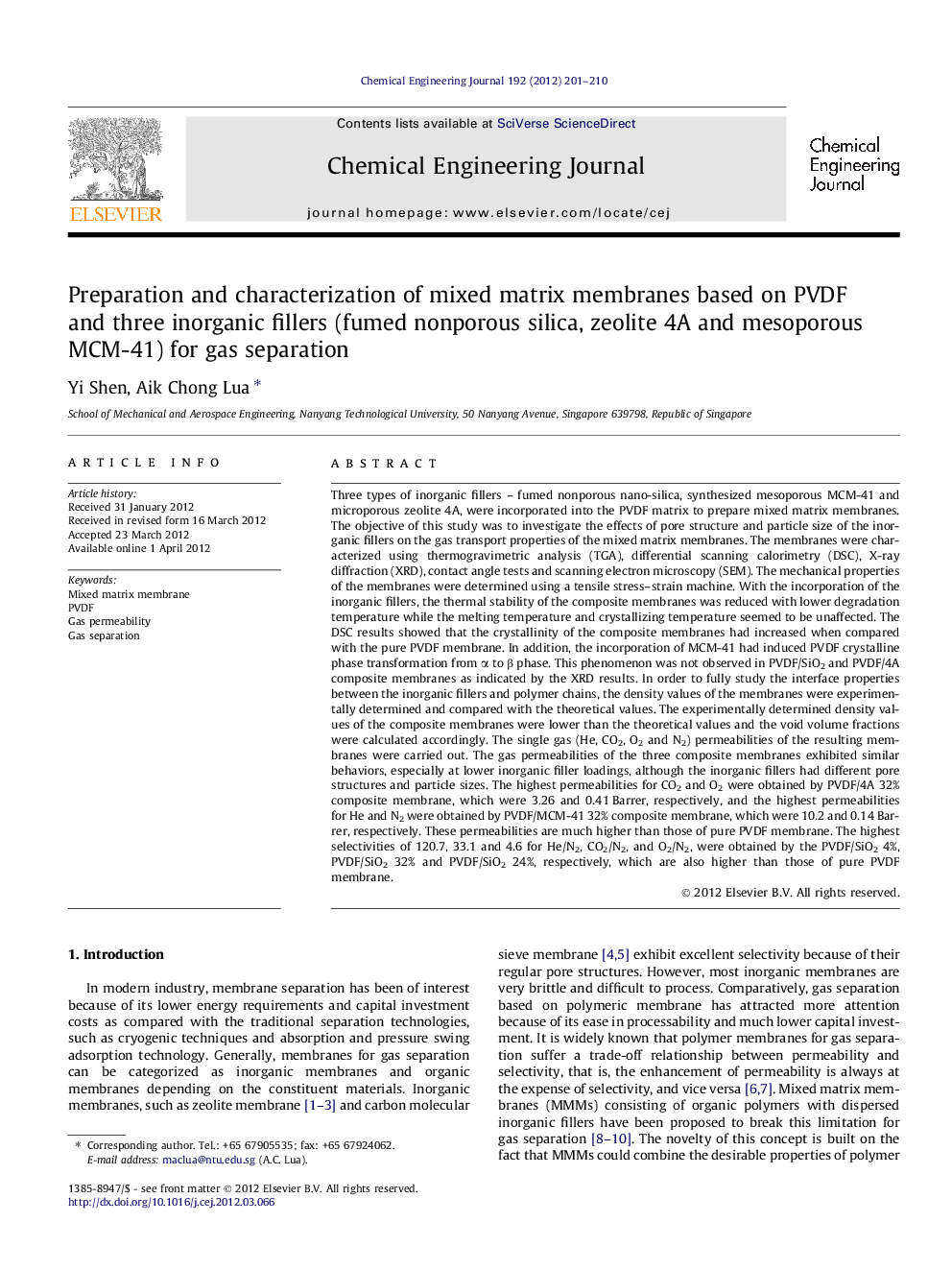| Article ID | Journal | Published Year | Pages | File Type |
|---|---|---|---|---|
| 149798 | Chemical Engineering Journal | 2012 | 10 Pages |
Three types of inorganic fillers – fumed nonporous nano-silica, synthesized mesoporous MCM-41 and microporous zeolite 4A, were incorporated into the PVDF matrix to prepare mixed matrix membranes. The objective of this study was to investigate the effects of pore structure and particle size of the inorganic fillers on the gas transport properties of the mixed matrix membranes. The membranes were characterized using thermogravimetric analysis (TGA), differential scanning calorimetry (DSC), X-ray diffraction (XRD), contact angle tests and scanning electron microscopy (SEM). The mechanical properties of the membranes were determined using a tensile stress–strain machine. With the incorporation of the inorganic fillers, the thermal stability of the composite membranes was reduced with lower degradation temperature while the melting temperature and crystallizing temperature seemed to be unaffected. The DSC results showed that the crystallinity of the composite membranes had increased when compared with the pure PVDF membrane. In addition, the incorporation of MCM-41 had induced PVDF crystalline phase transformation from α to β phase. This phenomenon was not observed in PVDF/SiO2 and PVDF/4A composite membranes as indicated by the XRD results. In order to fully study the interface properties between the inorganic fillers and polymer chains, the density values of the membranes were experimentally determined and compared with the theoretical values. The experimentally determined density values of the composite membranes were lower than the theoretical values and the void volume fractions were calculated accordingly. The single gas (He, CO2, O2 and N2) permeabilities of the resulting membranes were carried out. The gas permeabilities of the three composite membranes exhibited similar behaviors, especially at lower inorganic filler loadings, although the inorganic fillers had different pore structures and particle sizes. The highest permeabilities for CO2 and O2 were obtained by PVDF/4A 32% composite membrane, which were 3.26 and 0.41 Barrer, respectively, and the highest permeabilities for He and N2 were obtained by PVDF/MCM-41 32% composite membrane, which were 10.2 and 0.14 Barrer, respectively. These permeabilities are much higher than those of pure PVDF membrane. The highest selectivities of 120.7, 33.1 and 4.6 for He/N2, CO2/N2, and O2/N2, were obtained by the PVDF/SiO2 4%, PVDF/SiO2 32% and PVDF/SiO2 24%, respectively, which are also higher than those of pure PVDF membrane.
► Three inorganic fillers were added into the PVDF to prepare mixed matrix membranes. ► Thermal stability of the composite membranes was reduced. ► Crystallinity of the composite membranes increased over the PVDF membrane. ► Permeability for CO2, O2, He and N2 of composite membranes was higher than for PVDF membrane. ► Selectivities for He/N2, CO2/N2, and O2/N2, are higher than for PVDF membrane.
